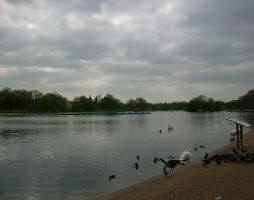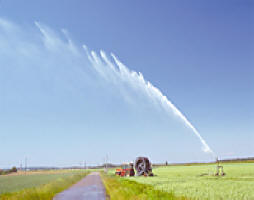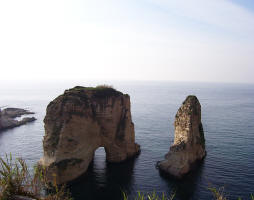 Steps
Steps
LIFE
I (1992-1995)
The
initial phase of LIFE coincided with the first time that EU environmental
policy was given a firm Treaty basis, in the Single European Act, and with
the Fifth Environment Action Programme, which was adopted in 1992. This was
to set the pace of environmental reform for the next decade and the LIFE
programme was one of its essential tools.
During its first phase, LIFE had a
number of components:
- Promotion of sustainable development and quality of the environment (new monitoring techniques, clean technologies, waste disposal, restoring contaminated sites, land-use planning and management, aquatic pollution, urban environment) - indicative allocation: 40 percent of the programme budget
- Protection of habitats and of nature (protecting endangered species and threatened habitats; combating desertification, erosion, etc.; marine conservation; freshwater conservation) - indicative allocation: 45 percent of the programme budget
- Administrative structures and environment services (cooperation and network development) - indicative allocation: 5 percent of the programme budget
- Education, training and information (professional training, environmental education and understanding, dissemination) - indicative allocation: 5 percent of the programme budget
- Actions outside Community territory (third country assistance) - indicative allocation: 5 percent of the programme budget
During its lifetime, LIFE I funded a total of
731 projects.
LIFE II (1996-1999)
During LIFE II, the programme was split into
three categories - LIFE-Nature, LIFE-Environment and LIFE-Third
countries..
LIFE-Environment projects had to contribute to innovation or policy
implementation in the fields of environmental monitoring, clean
technologies, waste management, the identification and rehabilitation of
contaminated sites, the integration of environmental concerns in town and
country planning, aquatic pollution reduction and the improvement of the
urban environment.
The objective was to demonstrate new
methods and techniques that would have the potential for pan-European
application and would pave the way for implementation of existing policies
in different environmental fields, or for the future development of
policy.
LIFE III (2000-2004, extended to end 2006)
The
thematic priorities of the programme are as follows: climate change, nature
and bio-diversity (including the Natura 2000 network), environment and
health, sustainable resource use, strategic approaches to policy
development, and ex-post evaluation. However, rather than being dealt with
thematically as in the past, these issues will be handled horizontally under
the two divisions shown above.
In total, between 1992 and 2004, the
LIFE programme spent EUR 1.36 billion on 2478 projects covering 40 countries
and territories. The total estimated cost of projects to which LIFE
contributed financially represents a huge environmental investment in Europe
and neighbouring states. Between 1992 and 2004 the total estimated cost of
projects supported by LIFE was EUR 3.6 billion. LIFE therefore provided
around 38 percent of the total investment, stimulating additional investment
in excess of EUR 2 billion up to the end of 2004.
LIFE + (2007-2013)
In September 2004 the European Commission proposed a new Regulation called LIFE+, to run from 2007 to 2013. It will support the implementation of the 6th Environmental Action Plan and support policy development at a European level.
 you are not logged in
you are not logged in







